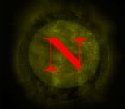 Santos in Puerto Rico are a four century folk art tradition. They were carved by artists known as a Santero and usually varied in style and design as well as dimensions. The style and design of the Santos were different depending on when they were made and where they were made. Primitive Santos are not as polished and clean as the colonial types of Santos. Some Santeros preferred to leave their Santos in a natural state to show the wood, others preferred to paint their pieces. My grandfather, Marcelino, was a Santero and he is said to have specialized in Los Tres Reyes Mago a Caballo, The Three Wise Men on Horseback (Three Kings). It is said by many that the Santero was inspired by a higher power and that it was not just a hobby or profession, I can confirm this as well as my grandfather was a spiritual man who truly had a higher calling.
Santos in Puerto Rico are a four century folk art tradition. They were carved by artists known as a Santero and usually varied in style and design as well as dimensions. The style and design of the Santos were different depending on when they were made and where they were made. Primitive Santos are not as polished and clean as the colonial types of Santos. Some Santeros preferred to leave their Santos in a natural state to show the wood, others preferred to paint their pieces. My grandfather, Marcelino, was a Santero and he is said to have specialized in Los Tres Reyes Mago a Caballo, The Three Wise Men on Horseback (Three Kings). It is said by many that the Santero was inspired by a higher power and that it was not just a hobby or profession, I can confirm this as well as my grandfather was a spiritual man who truly had a higher calling.Santos de palo are very collectible in every form and recently there has been a surge in their popularity as more and more Puerto Ricans are getting touch with their roots and their culture. In addition, art collectors are realizing the importance of this folk art form and it significance to the overall American culture that Puerto Ricans are now a large part of. A lot of people are also researching their roots as I have been doing and have found Santeros as ancestors as I have done. Unfortunately, most of the original antique and collectible Santos were unsigned by the Santero and can be difficult to authenticate them as genuine. However, in the past couple of years, El Museo de Los Santos in San Juan has been doing research and cataloging many of the specimens that they have found.

Pictured on the right is a picture of San Judas Tadeo, carved by Rubén Acevedo Méndez of Aguada, Puerto Rico. Rubén is one of the few young artists that remain true to their culture and is continuing to preserve the tradition of the Santero. This particular piece was made for Pope John Paul II and now resides in the Vatican, Rome.



No comments:
Post a Comment